Last updated: May 28, 2021
Article
NCR CESU Natural Resource Projects
Ever wondered about some of the natural resource projects happening in your park? Science and research in parks takes many forms and involves many collaborators both inside and outside the NPS. The projects below are ongoing in National Capital Region parks and are facilitated by agreements through the Chesapeake Watershed Cooperative Ecosystems Studies Unit (CW CESU). To learn more, contact CW CESU Research Coordinator Danny Filer at 301-491-2465.
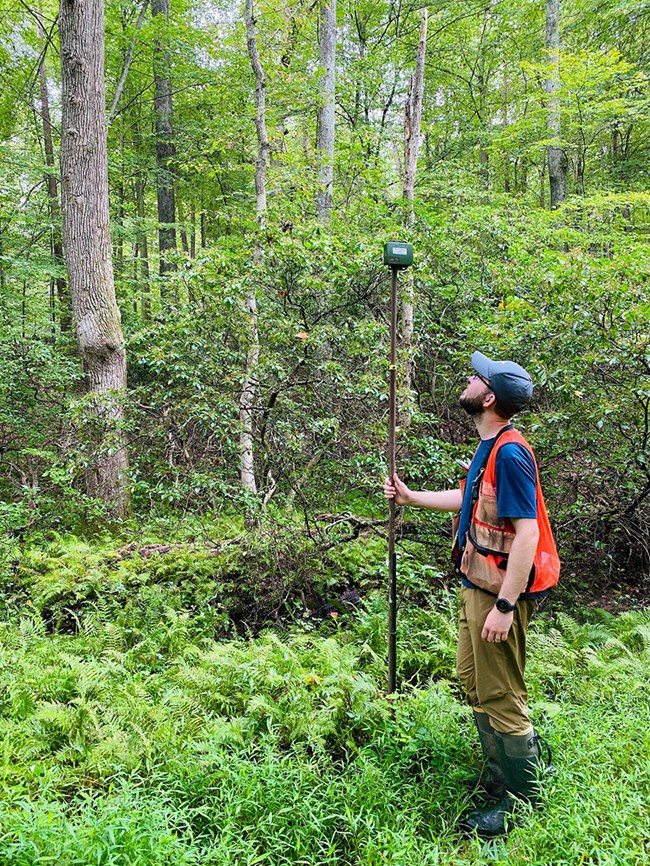
Sam Freeze
Project: Recreation Use and Impacts to Cliff Resources in Harpers Ferry National Historical Park (Travis Florh, Pennsylvania State University; P20AC01044)
Goal: Assess effects of recreation on vegetation at Maryland Heights.
Park: Harpers Ferry National Historical Park
Project: Assessing Presence and Roosting Ecology of the White-nose Syndrome-Impacted Tricolored Bat at Prince William Forest Park (Mark Ford, Virginia Polytechnic Institute and State University; P20AC001023)
Goal: Document the ecology of the tricolor bat (Perimyotis subflavus) that is imperiled by white-nose syndrome (WNS). Characterize spring fungal loads, summer roost characteristics, and possible overwintering of residual population in the park.
Park: Prince Willian Forest Park
Project: Assessing Status of Residual Populations of Threatened Northern Long-eared Bat in Rock Creek Park (Mark Ford, Virginia Polytechnic Institute and State University; P20AC00711)
Goal: Study federally threatened northern long-eared bats (Myotis septentrionalis) at Rock Creek to learn the geographic extent, annual reproductive variability, overwinter survival, annual natural roost selection variability, and genetic-based or stable-isotope based connectedness to non-hibernating bats that have avoided White Nose Syndrome.
Park: Rock Creek Park
Project: Rare Plant Communities in Areas of High Visitation (Anahi Espindola, University of Maryland; P20AC00806)
Goal: In the Potomac Gorge area, assess decades of rare plant survey data, identify trends in population size and species diversity, and look at correlations between rare vegetation, land development, and high visitor use.
Park: Chesapeake and Ohio Canal National Historical Park
Project: Has diversity increased? An inventory of Lepidoptera and Bees (Anne Chazal, Virginia Department of Conservation and Recreation; P19AC00137)
Goal: Survey Lepidoptera and bees using sweep nets for butterflies and skippers, ultra-violet light traps for moths, and bee bowls/pan traps, vane traps, and netting for bees.
Park: Manassas National Battlefield Park
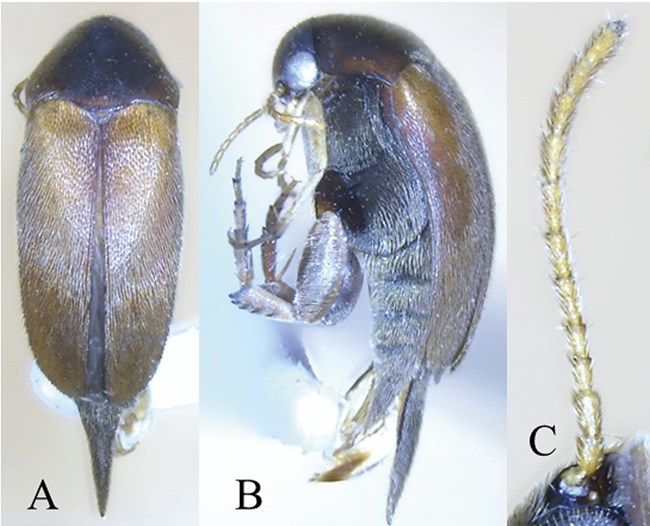
NPS/Steury
Project: Assessing the Boundary of White-nose Syndrome Across C&O Canal and Maryland Conservation Lands (Ben Ford, Indiana University of Pennsylvania; P19AC01216)
Goal: Sample habitats across Maryland conservation lands to better understand white-nose syndrome dynamics among the many bat species and hibernating colonies, (including threatened and endangered species) that occupy park hibernacula.
Park: Chesapeake and Ohio Canal National Historical Park
Project: Using eDNA for Aquatic Inventory and Monitoring in National Capital Region Parks (Robert H. Hilderbrand, University of Maryland Center for Environmental Studies; P19AC01195)
Goal: Use eDNA sampling in 37 NCR streams to compare eDNA analysis results to traditional monitoring data, complete a genetic barcode sequence database for NCR streams, and assess best methods for eDNA use in clean/sediment-heavy water and primers (i.e. markers) for eDNA.
Parks: All NCR parks except National Mall and Memorial Parks
Project: Enhancing Scientific Data Collection and Management of Natural Resources in the NCR through Student Internships (Alonso Aguirre, George Mason University; P19AC01167)
Goal: Internship opportunity for students to learn about federal permitting, the National Environmental Policy Act, collecting and processing specimens, and long-term data management.
Parks: Open to all interested NCA parks
Project: Using Citizen Science to Determine Coyote Food Habits and Specific Individuals in DC Parks (Jennifer Murrow, University of Maryland; P19AC01084)
Goal: Look at food habits and specific individual of coyotes in Rock Creek Park and National Capital Parks - East through scat. Determine if coyotes are consuming natural or human-produced foods and initiate the mark-recapture dataset needed to determine population size.
Parks: Rock Creek Park, National Capital Parks - East
Project: Engage Youth to tell Park Resource Adaptation Stories (Edward Maibach, George Mason University; P19AC01060)
Goal: Internship opportunity for students to synthesize, interpret, and develop science communication products and messages about global environmental change and its effects on parks.
Parks: Open to all NCA parks
Project: Monitoring Effects of Canada Goose Herbivory on the Tidal Freshwater Wetlands in Anacostia Park (Keryn Gedan, George Washington University; P19AC01016)
Goal: Studying ecosystem change from nonnative non-migratory Canada goose (Branta canadensis maxima) on restored wetlands.
Park: Anacostia Park within National Capital Parks - East
Project: Advance NCR Partnership and Community Engagement Program: Short Science-education Videos Designed for Onsite Viewing by NCR Park Visitors and for Social Media (Maggie Burnette Stogner, NPS; P19AC00999)
Goal: Create short, sharable, educational videos about science happening in the National Parks of the National Capital Region. Science themes will reflect the work of current investigators ranging from dragonflies to weather patterns.
Parks: Open to all NCA Parks. Projects in 2021 will focus on Harpers Ferry, Catoctin, and Wolf Trap.
Project: Mitigating Cyanobacteria Blooms in Constitution Gardens (Drew Ferrier, Hood College; P19AC00949)
Goal: Describe current conditions, lake health, and identify and recommend best management practices for sustainable management of Constitution Gardens lake.
Park: Constitution Gardens in National Mall and Memorial Parks
Project: Working with Students to Understand Forest Bee Response to Deer Management and Forest Restoration (Karen Burghardt, University of Maryland; P19AC01153)
Goal: Native bee communities in the Great Falls/Gold Mine area have had sparse understory vegetation with few native floral resources due to a long history of deer browse. How are they responding to forest restoration and regeneration allowed by deer management?
Park: Great Falls/Gold Mine area of Chesapeake and Ohio Canal National Historical Park
Project: Assess Occurrence and Diversity of Mammals of Conservation Concern (Thomas L. Serfass, Frostburg State University; P19AC00792)
Goal: Better understand the occurrence, distribution, diversity, abundance, and habitat use of forest mammals including local species of conservation concern like the Allegheny woodrat, various mesocarnivores (e.g. bobcat, fisher, and long-tailed weasel), and large carnivores (e.g. coyotes and black bears). This project will use camera traps to detect mammals across western Maryland.
Parks: Chesapeake and Ohio Canal National Historical Park
Project: Monitoring Fish Populations and Stream Habitat Quality for NPS Units of the NCR (Marc Peipoch, Stroud Water Research Center; P19AC00578)
Goal: Collect and analyze data on the status and trends of fish populations as well as stream habitat quality in 37 freshwater streams in NCA parks.
Parks: All NCA parks except National Mall and Memorial Parks
Project: Monitoring Stream Benthic Macroinvertebrates for NPS Units of the NCRN (Robert H. Hilderbrand, University of Maryland Center for Environmental Science; P19AC00303)
Goal: Collect and analyze data on the status and trends of benthic macroinvertebrates in 37 freshwater streams in NCA parks.
Parks: All NCA parks except National Mall and Memorial Parks
Project: Identify and Map At-Risk Plants in Harpers Ferry (Sunshine L. Brosi, Frostburg State University; P19AC00275)
Goal: Study current distribution and abundance of at-risk vascular plant species in Harpers Ferry National Historical Park. Since the last inventory in 1998, floods have affected the locations and populations of some species.
Park: Harpers Ferry National Historical Park
Project: Survey of the Scarab Beetles and Closely Allied Families of the George Washington Memorial Parkway (Insecta: Coleoptera) (M.J. Paulsen, University of Nebraska, Lincoln; P19AC00260)
Goal: Document the insect and other arthropod diversity found within George Washington Memorial Parkway while advancing the cooperator’s studies in the biosystematics of scarab beetles and other closely allied families.
Park: George Washington Memorial Parkway
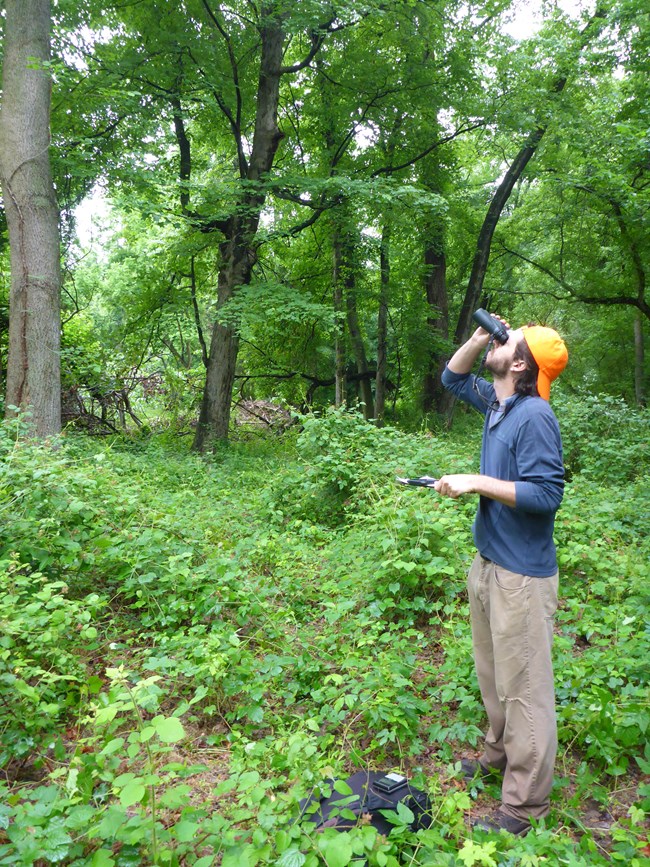
NPS/Nortrup
Project: Quantifying the Ecological Contributions of Urban Trees (P. Eric Wiseman, Virginia Polytechnic Institute; P18AC01405)
Goal: Internship opportunity to increase understanding of, appreciation for, and identify management considerations to be applied to large trees in the urban forests of National Capital Region (NCR) parks.
Parks: Open to all NCA Parks. Current focus includes Rock Creek Park, the National Mall, and Monocacy National Battlefield.
Project: A Survey of the Fauna of Seepage Springs in National Capital Parks - East (David Culver, American University; P18AC01102)
Goal: To expand baseline knowledge of seepage springs and their subterranean fauna including flatworms, amphipods, snails, and isopods and georeference seepage spring locations in an area. The Potomac Basin is known to be a hotspot of this type of diversity.
Parks: National Capital Parks - East
Project: Impacts of White-tailed Deer Herbivory on Vegetation in NCR parks (Gail S. White, George Washington University; P18AC00970)
Goal: Study the impacts of overabundant native deer on national park vegetation and natural communities before and after park deer management.
Parks: Harpers Ferry National Historical Park and Rock Creek Park
Project: Implementing the Avian Monitoring Protocol for NPS Units of the NCRN (Greg Shriver, University of Delaware; P18AC00749)
Goal: Collect and analyze data on the status and trends of forest and grassland breeding birds.
Parks: All NCA parks except National Mall and Memorial Parks
Project: Inventory of Orthopterans (Crickets, Grasshoppers and Katydids) of George Washington Memorial Parkway (Timothy Forrest, University of North Carolina-Asheville; P18AC00593)
Goal: Document the insect and other arthropod diversity found within George Washington Memorial Parkway and advance the cooperator’s studies in the evolution of synchrony and the evolution of complex signals in acoustic insects like the crickets, grasshoppers, and katydids.
Park: George Washington Memorial Parkway
Project: Survey of the Click Beetles of George Washington Memorial Parkway (Insecta: Coleoptera) (Paul J. Johnson, South Dakota State University; P18AC00478)
Goal: Document the insect and other arthropod diversity found within George Washington Memorial Parkway and advance the cooperator’s studies in the systematics of click beetles.
Park: George Washington Memorial Parkway
Project: Assess Feasibility and Cost-efficiency of DNA Methods to Identify Insect Samples (Paul Gugger and Eric Davidson, University of Maryland Center for Environmental Science; P18AC00317)
Goal: Use DNA metabarcoding and high-throughput gene sequencing to identify insect species in bulk invertebrate samples at I&M forest vegetation plots. This will help build a reference gene database for insects and arachnids, establish standardized invertebrate samples from a subset of I&M forest vegetation monitoring plots, identify individuals to species, and compare quality and costs of gene-derived species identifications versus morphologically-based assessments.
Park: Chesapeake and Ohio Canal National Historical Park
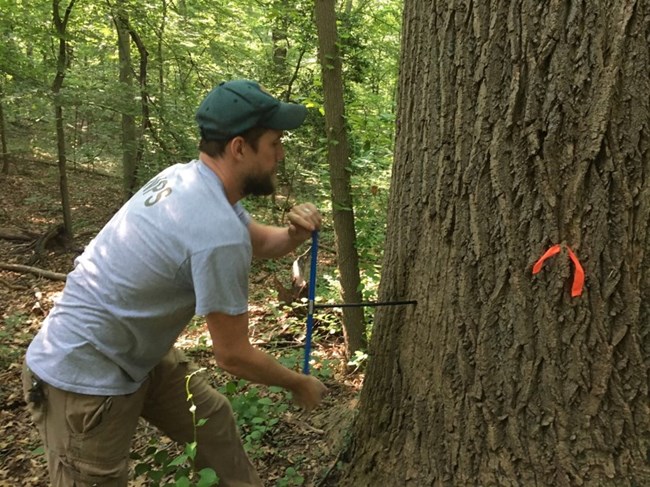
NPS/Nortrup
Project: Second Century Regional Resource Stewardship Assessment (Simon Costanzo and William C. Dennison, University of Maryland Center for Environmental Science; P17AC01714 and P16AC01287)
Goal: This project will create a preliminary Regional Resource Condition Assessment: an integrated natural and cultural resource assessment of 11 of the NCR parks. This will populate a regional database to serve the parks in the next phase of Natural Resource Condition Assessments (NRCAs) and Resource Stewardship Strategies (RSSs).
Parks: All NCA parks except National Mall and Memorial Parks
Project: Internships to Connect Parks, People and Science (Katerina Thompson, University of Maryland Center for Environmental Science; P17AC01612)
Goal: Internship opportunity for understanding connections between changing environment and local flora and fauna, increasing scientific literacy, understanding the scientific method, and how life cycles are tied to the physical environment. Interns will develop projects around natural resources with citizen science, phenology, modelling, protection, or resiliency components.
Parks: Open to all NCA Parks
Project: Dendroecological Analysis of Dominant Tree Species at NCRN Forest Monitoring Plots: Wood Production and Canopy Responses to Climate Variability (Andrew Elmore, University of Maryland Center for Environmental Science - Appalachian Lab)
Goal: Estimate stand age at all National Capital Region Network long-term forest monitoring plots and generate a record of the historical pattern of tree growth as recorded by tree rings.
Parks: All NCA parks except National Mall and Memorial Parks
Project: Climate Change Communication Internship Program (Edward Maibach, George Mason University; P17AC00403)
Goal: Internship opportunity communicating about complex science issues and research results. Gain skills in synthesis, interpretation, and development of scientific communication products, and communicating about climate change and its effects on parks.
Parks: Open to all NCA parks. Parks served include: Catoctin Mountain Park, Chesapeake and Ohio Canal National Historical Park, George Washington Memorial Parkway, Harpers Ferry National Historical Park, Monocacy National Battlefield, National Capital Parks - East, Kenilworth Park and Aquatic Gardens, Fort Washington Park, National Mall and Memorial Parks, Prince William Forest Park, Rock Creek Park, and Wolf Trap National Park for the Performing Arts.
Project: Submerged Aquatic Vegetation (SAV) Restoration in Anacostia / Potomac River (Matthew Robinson, DC Department of Energy & Environment - for Department of Defense, U.S. Army Corps of Engineers; W912HZ-21-2-0005)
Goal: The DC Department of Energy & Environment (DOEE) is proposing to restore submerged aquatic vegetation (SAV) beds at an existing restoration site in Oxon Cove, a sub-estuary of the Potomac River, and two new sites in the Anacostia River, in Washington, DC.
Parks: waterways adjoining Oxon Cove and Anacostia River parks in National Capital Parks – East
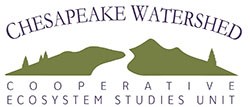
The CW CESU promotes stewardship and integrated ecosystem management of natural and cultural resources in the Chesapeake Watershed through collaborative research, technical assistance, and education. To learn more about the CW CESU, please contact Danny Filer at 301-491-2465 or browse the CW CESU Newsletter.
